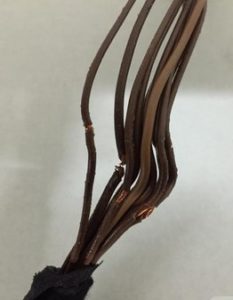People say that VW’s have a lot of electrical problems. I’m not sure thats really true. Cars are certainly more complicated than they used to be. This is sometimes driven by convenience or style. I wonder sometimes if the designers and engineers consider the end user experience, or is the vehicle designed to simply minimize manufacturing costs and maximize service revenue. This becomes relevant as you read on.
The MK4.5 Jetta, which is the Canadian City Jetta . The ‘City’ was a life extension for the MK4 in the Canadian market circa 2007-2009 while there were no diesel models available. During this time the Canadian dealers cried foul as they had no low cost base models that could allow them to sell. The City Jetta saved the day as it had some styling upgrades to make them seem more appealing. Such as the VW logo electric trunk release. Very stylish, and somewhat trick hidden trunk release, which could be activated via the folding key fob, and locked via the central locking system.
We’ve had the Jetta since 2009, with no major issues, only maintenance like brakes, timing belt. It has generally been a great car with no issues. However, in the middle of February the trunk release became intermittent. Sometimes would open via the trunk button on the key, sometimes not. Other times the trunk wouldn’t lock unless the trunk was closed very slowly. Not really a job to tackle in February, even in a warm-ish garage, so we deferred that repair until the warm weather.
At one point, I somehow managed to get my fingers slammed in the trunk lid. I had enough, and I’m sure Mrs. Brown has had enough of the Jetta trunk fiasco too, so I decided to have a look. Here is where I become annoyed with VW as a manufacturer, such a love hate relationship. In the wisdom of design/engineering, they placed a wiring loom in the trunk. This wiring loom supports the reverse lamps, trunk open switch, and the electric trunk release system. The problem is, every time the trunk is opened/closed these wires must flex in a rubber conduit. This is just like bending a paper-clip back and forth until it snaps. Snap it had – the insulation and copper conductors had failed inside the rubber conduit. Most 10 year old kids even know what happens when you bend a paper-clip back and forth, so I ask whats wrong with VW engineers? Why wouldn’t the vehicle be designed in a way where the wiring remains in a mostly static position, less prone to failure.
Apparently, this isn’t exclusive to our MK4.5, but spans from Audi’s to many models in the VW line. Oh yeah, doors are prone to the wire breaks too!

My repair was crude, involved soldering, and copious amounts of heat shrink tubing. I cut open the rubber conduit where the wires had failed, and soldered the broken wires back together. I then heat-shrink-ed a few layers on top of each other to repair the conduit. I don’t expect this repair to last forever. The Internet says a few weeks, but I’m more optimistic than that. A better repair is to replace the section of wire in the flexible area and make the splices in a static area. An even better idea would be to not design something that could be failure prone like this.
Overall, the Jetta is a great product, but poor design choices like this would probably change opinions overall on a product. People communicate with each other these days, and exchange notes about technical issues like these. To the common person, it might seem like VW’s have a lot of electrical problems after all.
